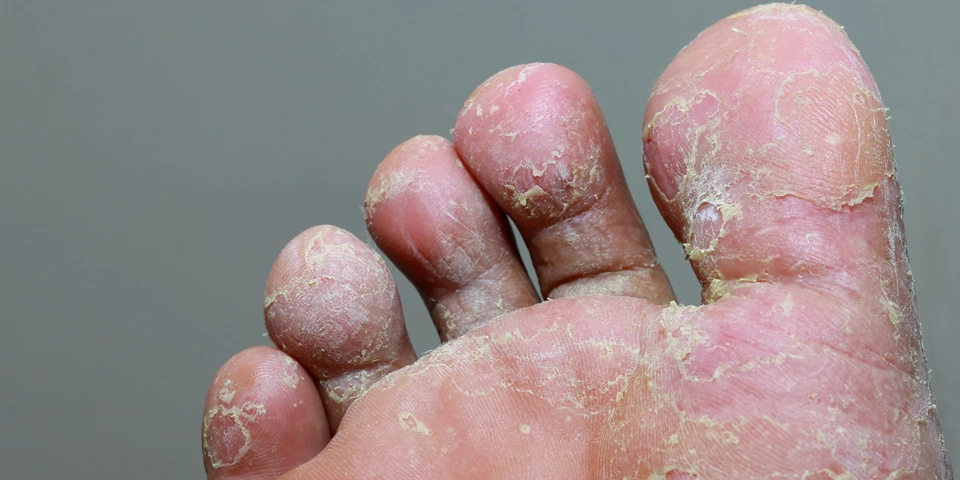Fungal skin infections are not much fun. They are uncomfortable and not particularly nice to look at. They are also easily spread. However, they are relatively easy to treat.
Some of the main fungal skin infections include:
- Athletes foot: this is the most common one, and 70% of people will suffer from it at some point or another in their lifetime. Because your feet become moist when they sweat, fungi can grow in the skin between the toes and the soles of the feet. This can cause the skin to be flaky, itchy and can crack or produce painful sores. It can also spread to other parts of the body easily.
- Nail infections: Any part of your nails can become infected with fungus. Toenails are much more likely than fingernails to be affected. Nails become discoloured, rough, and crumbly as a result of the infection. It’s also possible that your nail may thicken. It is more common in people with conditions such as diabetes or psoriasis.
- Ringworm: This is most common on exposed parts of your body, such as your arms, legs, and torso. It produces a rash that is red, scaly, and ring-shaped. Ringworm may be contracted by contacting someone who has it or by coming into contact with infected objects such as clothing or bedding. The ringworm fungus can also be carried by animals, such as cats and dogs.
How can you treat fungal infection?
 One of the best treatments for fungal infections, especially those in the toenails and fingernails is amorolfine. While more severe cases may need antifungal tablets, amorolfine in the form of nail lacquer is ideal for minor infections on the tips of nails.
One of the best treatments for fungal infections, especially those in the toenails and fingernails is amorolfine. While more severe cases may need antifungal tablets, amorolfine in the form of nail lacquer is ideal for minor infections on the tips of nails.
Amorolfine is suitable for adults and is available on prescription. For fingernails, a six-month course of treatment may be required; for toenails, it may be twelve months due to the moist environment.
The nail lacquer is applied to the affected nail as per the instructions in the leaflet. Depending on how severe the infection is, this may be needed once or twice a week – your doctor will be able to advise you further on this.
To get the most out of the best treatment for fungal infection, you should try keeping nails cut short and neatly trimmed; use a nail file to gently keep them even and straight. However, a separate pair of scissors and nail file should be used on the infected nail to avoid spreading the fungal nail infection further. It is also a good idea to avoid using any other nail lacquers at the same time and leave the artificial nails off until treatment has finished and the infection has cleared.
Are there any side effects of using amorolfine to treat fungal infection?
As with everything, occasionally people may experience side effects after using amorolfine. These include broken or brittle nails or nail discolouration. While not desirable, this should pass once the nail has regrown. Some people may feel a burning sensation, irritated skin, redness or itching. If this happens, speak to your doctor.





